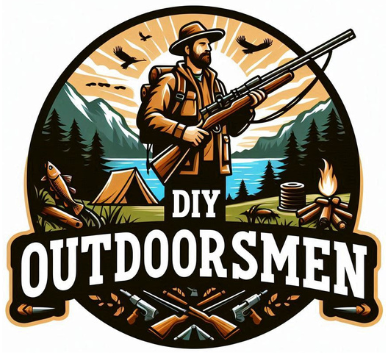Contents
- 1 Understanding Camouflage Fundamentals for Bowhunting
- 2 Choosing the Right Camouflage Pattern
- 3 Full Body Camouflage Techniques
- 4 Minimizing Movement and Using Natural Cover
- 5 Camouflaging Your Hunting Gear
- 6 Season-Specific Camouflage Tactics
- 7 Frequently Asked Questions About Bowhunting Camouflage
- 8 Final Thoughts and Action Steps
I have spent countless hours in the field learning how effective camouflage can be when bowhunting. Blending into your environment can be the key factor in a successful hunt. Whether you’re just starting out or have been bowhunting for years, mastering camo techniques is essential.
QUICK LOOK: Camo Tips for Bowhunting
- Choose the right pattern: Selecting the best camo pattern begins by assessing the terrain. I consider factors like seasonal changes, vegetation density, and the textures of the environment.
- Full Body Coverage: Many hunters focus solely on clothing while neglecting other visible areas. True camouflage means covering all exposed parts.
- Minimize Movement: Even if you are perfectly camouflaged, unnecessary movement can still give you away. Animals are extremely sensitive to even the slightest motions.
- Camo Your Gear: Your gear, including your bow, quiver, and accessories, plays an essential role in your overall camouflage. It’s easy to overlook equipment, but even slight reflections or mismatched colors can give you away.
- Season Specific Camo: The environment can change drastically with the seasons, so adapting your camouflage is key. I have developed several tactics to match these shifts.
In this article, I share my insights on selecting the right camo patterns, covering your body completely, reducing movement, choosing smart environments, and ensuring your gear seamlessly fits in with nature. I invite you to check out methods that can help minimize detection and make your hunting experience far more satisfying.
Understanding Camouflage Fundamentals for Bowhunting
Effective camouflage starts with understanding its purpose: lowering your visual profile so that game doesn’t notice you. Animals quickly pick up on movement and contrasts, so the right techniques can break up your shape and help you blend into nature.
When heading out for a hunt, I focus on a few key elements. First, I match my clothing colors to the environment. Then, I choose patterns that mimic natural textures such as leaves, branches, and tree bark. Finally, I reduce reflective surfaces by using accessories like face paint and head coverings.
Using these fundamentals ensures that every part of my body and equipment works together to create a nearly invisible look in the wild.
Choosing the Right Camouflage Pattern
Selecting the best camo pattern begins by assessing the terrain. I consider factors like seasonal changes, vegetation density, and the textures of the environment. For example, a thick forest with deep greens and browns calls for earthy tones, while autumn settings may require warmer hues.
The following points guide my selection:
- Terrain Match: Choose a pattern that reflects the dominant colors of the area, whether it’s lush foliage or rugged rocky backdrops.
- Seasonal Considerations: Adjust your choice depending on the time of year; lighter, moist patterns work in summer, while richer, warm tones suit fall hunting.
- Breaking the Outline: Use designs that disrupt your silhouette, making it harder for animals to pick up on your form.
This planned approach gives me confidence that I am well-prepared for any hunting location. I remind myself that every environment is different, so being flexible with your camo choice is really important.
Full Body Camouflage Techniques
Many hunters focus solely on clothing while neglecting other visible areas. True camouflage means covering all exposed parts. I ensure that every bit of skin is protected—not just with a jacket and pants, but also with accessories like gloves, hats, and face covers.
Here are the techniques I use for complete body camouflage:
- Complete Coverage: I match the pattern on all parts, from head to toe, to achieve a unified look.
- Face Paint and Head Covers: I carefully apply face paint in tones that blend with the surroundings and use headnets to soften any sharp edges.
- Layering Techniques: Layering clothing of different textures not only protects against the elements but also disrupts a smooth outline, making your shape less distinct to observers.
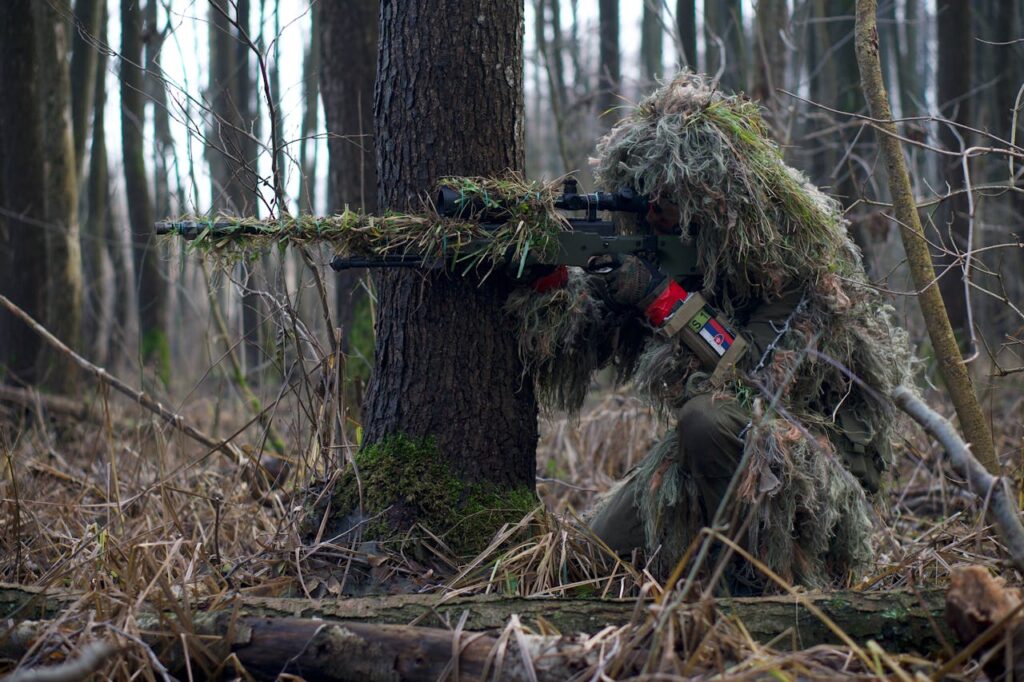
Paying attention to these details can make a significant difference when you’re out in the field.
Minimizing Movement and Using Natural Cover
Even if you are perfectly camouflaged, unnecessary movement can still give you away. Animals are extremely sensitive to even the slightest motions.
Consider these strategies to keep your movement to a minimum:
- Slow and Steady: Move slowly and carefully when shifting between positions. Quick movements can easily catch an animal’s eye.
- Patience Pays Off: Sitting quietly for extended periods lets you merge with your environment. Natural sounds help mask your presence while you remain motionless.
- Utilize Natural Barriers: Position yourself near trees, bushes, or terrain ridges. These natural covers help break up your silhouette and further hide your presence.
By relying on methods that encourage stillness, I’ve found that animals are less likely to react to my presence.
Camouflaging Your Hunting Gear
Your gear, including your bow, quiver, and accessories, plays an essential role in your overall camouflage. It’s easy to overlook equipment, but even slight reflections or mismatched colors can give you away.
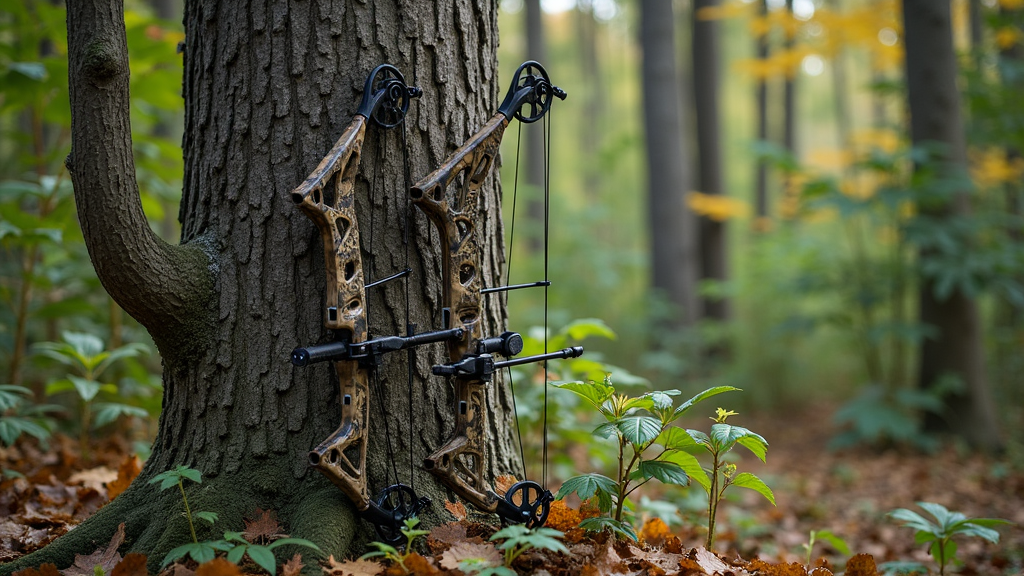
These methods help me ensure that every piece of gear blends in seamlessly:
- Camo Tape and Paint: I cover bright edges or shiny components on my bow with specially designed tape or paint, reducing any abrupt contrasts.
- Coordinated Color: I make sure my gear has patterns or colors that align with my clothing, so nothing stands out unexpectedly.
- Regular Check-ups: I inspect my equipment often for signs of wear or fading and address issues quickly to maintain an effective camo look.
This cohesive approach ensures that every element in my setup contributes to a smooth, unified camo appearance.
Season-Specific Camouflage Tactics
The environment can change drastically with the seasons, so adapting your camouflage is key. I have developed several tactics to match these shifts.
Here are some effective strategies for various conditions:
- Woodland Patterns: In dense forests, patterns that mimic the natural textures of tree bark and leaves work very well.
- Snow Camouflage: During winter, using a snow camo that blends with frost-covered branches and snowy settings is crucial. Lighter tones help distort your outline in a winter wonderland.
- Rocky Terrains: In areas with more barren, rocky landscapes, muted grays and earthy tones help you blend into the backdrop.
- Mixed Environments: For places that combine open fields with thick cover, versatile patterns like digital camo provide balance by combining larger and smaller design elements.
This flexibility in choice allows me to adapt quickly when conditions change, ensuring I remain hidden in every situation.
Frequently Asked Questions About Bowhunting Camouflage
Is it necessary to camouflage every piece of gear?
Absolutely. Covering your equipment helps eliminate any bright spots that could otherwise give you away. Matching your gear to your clothing is a simple yet effective way to improve your overall concealment.
What if my chosen camo pattern doesn’t perfectly fit every terrain?
It’s a smart idea to have more than one type of camo when hunting in varied environments. I often invest in an extra set of patterns so I can switch between wooded, grassy, or rocky areas without a hitch.
Does using face paint really help with concealment?
Yes, it does. Matching your facial tones to the surroundings can diminish distinct features that might otherwise be noticeable, particularly in bright light.
If you ever notice unexpected movement from game while in your position, remain as still as possible and reposition only when it’s safe. This careful approach has consistently yielded positive results during my hunts.
Final Thoughts and Action Steps
Mastering effective camouflage for bowhunting is both an art and a disciplined practice. Every detail—from clothing to gear—contributes to your success in the field.
Here are the key steps I follow on each hunting trip:
- Select the Best Pattern: Carefully study the dominant colors and textures of your hunting area. Match your clothing and gear to the surroundings for a cohesive look.
- Cover All Exposed Areas: Make sure that no part of your body is left vulnerable. Use face paint, hats, and gloves to ensure a seamless blend with nature.
- Minimize Movement: Practice slow, deliberate actions and remain patient. Use natural cover to hide any slight movements until it’s time to reposition.
- Camouflage Your Equipment: Don’t overlook your bow and accessories. Ensure every item carries a matching scheme that ties your overall look together.
- Stay Flexible: Weather and surroundings can shift in an instant. Always review local conditions before heading out and be ready to switch up your patterns as needed.
Every hunt offers new lessons that help me step up my camo skills. I continuously look for ways to improve my techniques and share what I learn with fellow bowhunters. Preparation is very important. It isn’t just about the gear. It’s about harmonizing every element of your approach to create a seamless, effective camouflage. With practice, you will surely stumble upon the difference that thoughtful strategy can make.
Take these techniques, put them into practice, and experience how a well-crafted camo plan can transform your hunting adventure. Happy hunting, and stay safe out there!
Check Out These Recent Articles:
- How To Track Wild Hogs DIY Tips And Techniques
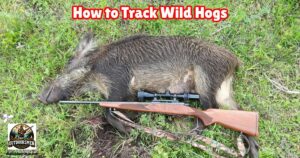
- Bow Vs. Crossbow Hunting: What You Need To Know
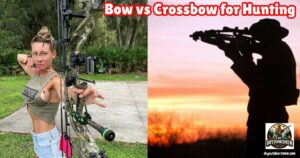
- Understanding Deer Behavior To Improve Your Hunt
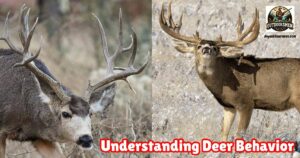
- Complete Guide On Tracking Game Animals
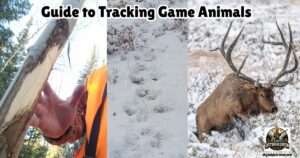
- DIY 4-Step Guide To Field Dressing And Quartering A Deer
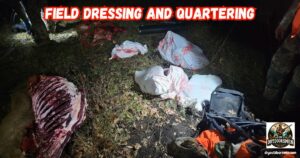
- Night Vision Binoculars For Nocturnal Hunting
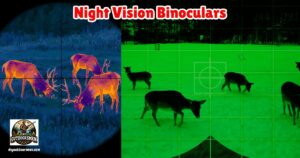
As always, stay safe, enjoy the journey and please try to leave it cleaner than you found it. If you have any comments, questions, ideas, or suggestions please leave them in the comment section below and I’ll get back to you ASAP. You can follow us on YouTube: Man Art Creations for videos of our DIY Adventures.
P.S. – Thanks so much for checking out our blog we really appreciate it. Just so you know, we may receive a commission if you click on some of the links that appear on our site. This helps us keep our content free and up-to-date for everyone. We appreciate your support!
